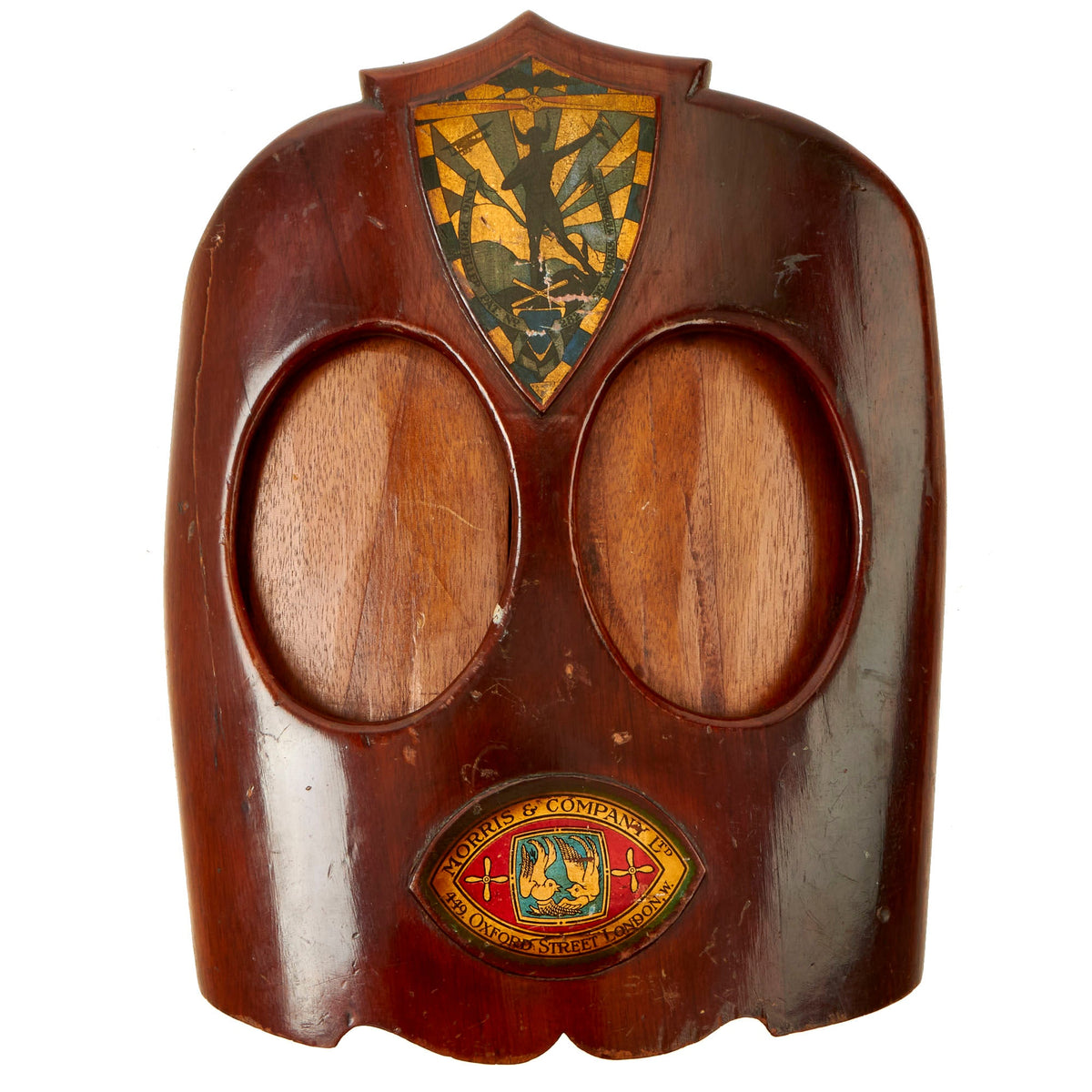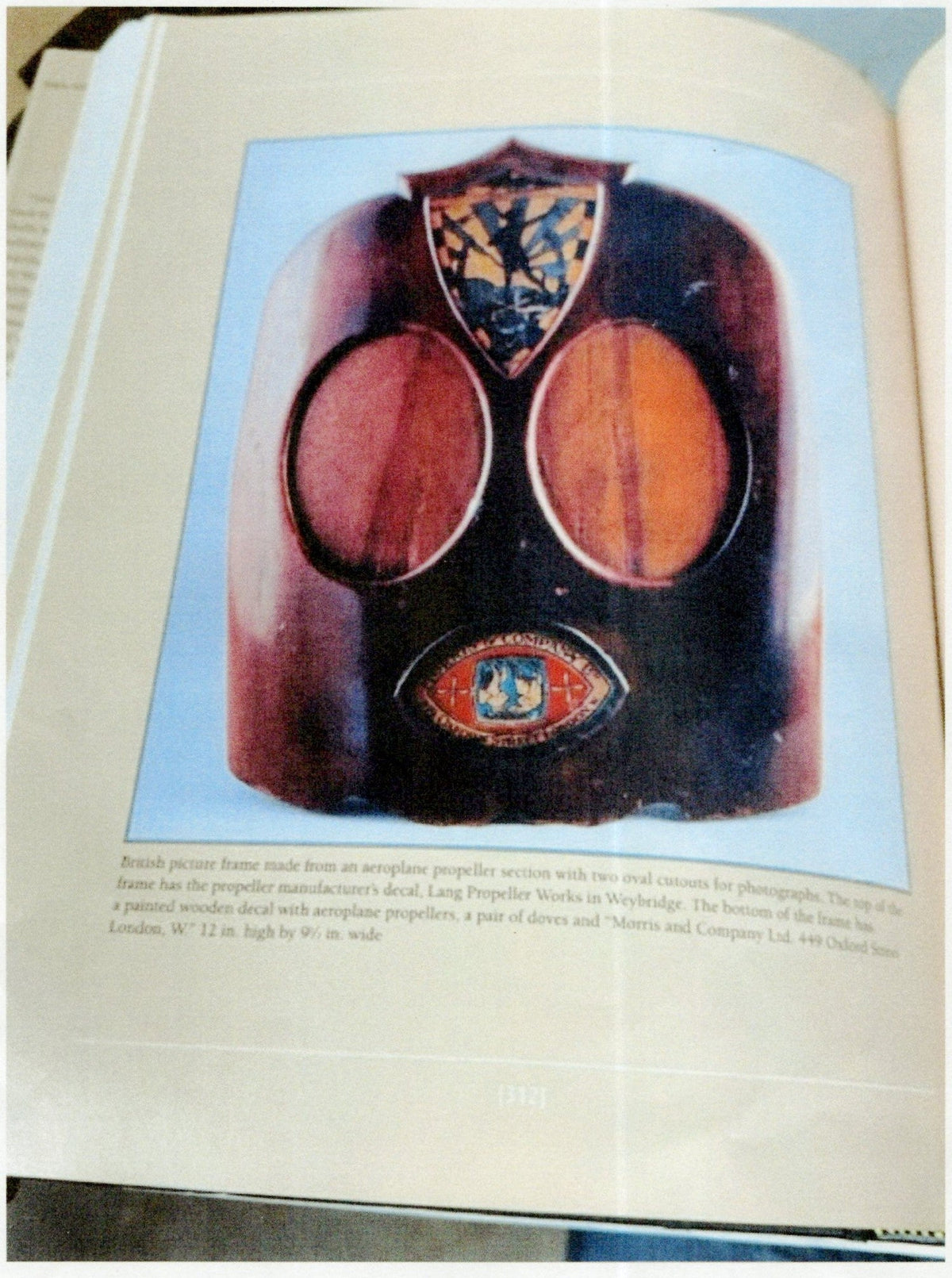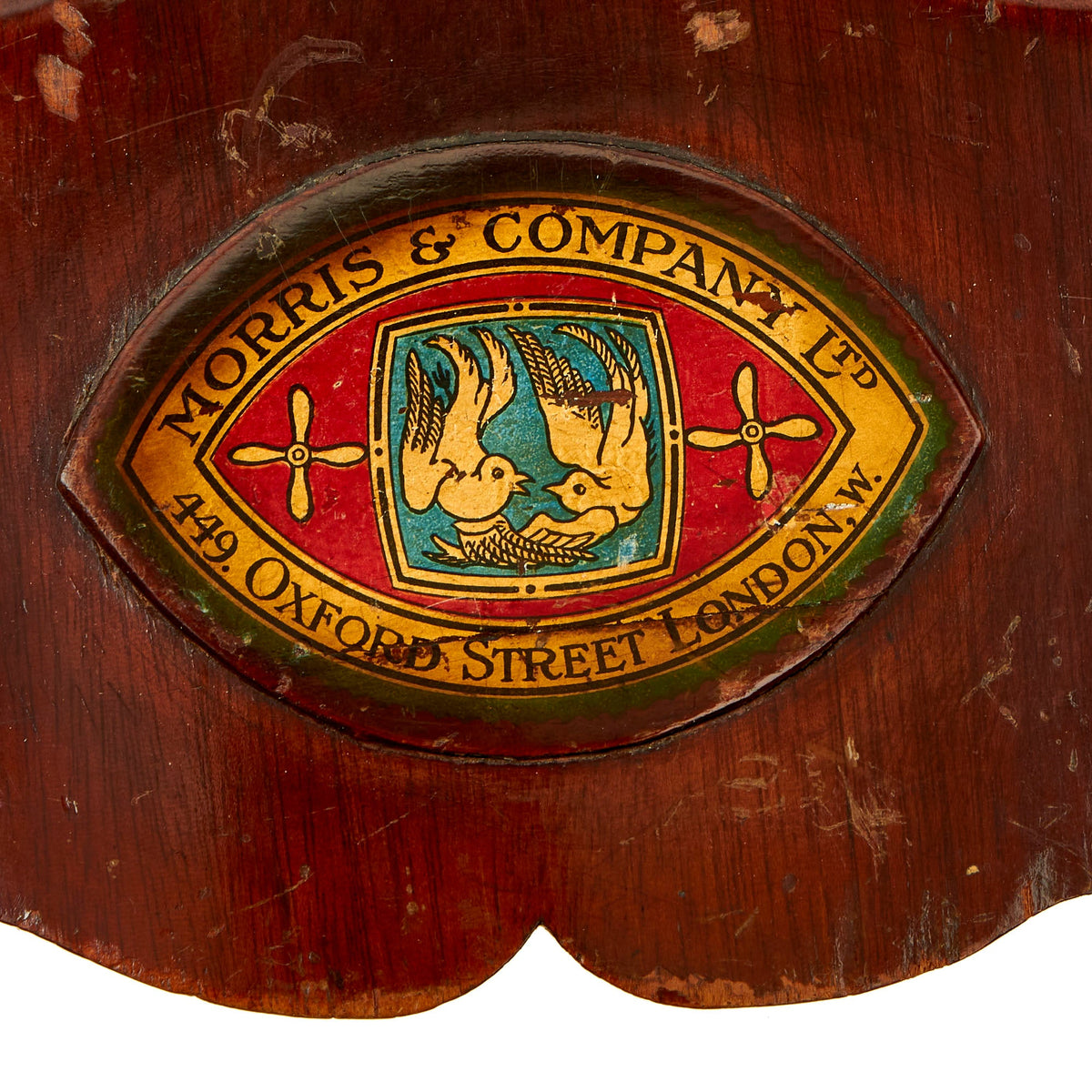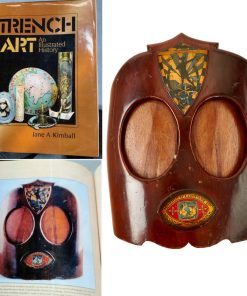Original British WWI Trench Art Picture Frame Made From Aircraft Propellers by Lang Propeller Co. Ltd As Featured In The Book “Trench Art, An Illustrated History” by Jane Kimball on Page 312 Original Items
$ 595,00 $ 178,50
Original Item: Only One Available. Trench art is any decorative item made by soldiers, prisoners of war, or civilians where the manufacture is directly linked to armed conflict or its consequences. It offers an insight not only to their feelings and emotions about the war, but also their surroundings and the materials they had available to them.
Not limited to the World Wars, the history of trench art spans conflicts from the Napoleonic Wars to the present day. Although the practice flourished during World War I, the term ‘trench art’ is also used to describe souvenirs manufactured by service personnel during World War II. Some items manufactured by soldiers, prisoners of war or civilians during earlier conflicts have been retrospectively described as trench art.
Reference books are an essential part of any collector’s knowledge and growth in their particular field of interest. The 2004 book “Trench Art, An Illustrated History” by Jane Kimball is a comprehensive study of Trench Art and does a wonderful job in presenting the historical context of trench art throughout history. The book covers about 400 pages and includes hundreds of illustrations as well as mountains of primary source material and original photographs that document the evolution, styles and construction of the trench art genre. This picture frame is found on page 312.
The caption from the page is a lovely description:
“British picture frame made from an aeroplane propeller section with two oval cutouts for photographs. The top of the frame has the propeller manufacturer’s decal, Lang Propeller Works in Weybridge. The bottom of the frame has a painted wooden decal with aeroplane propellers, a pair of doves and “Morris and Company Ltd. 449 Oxford Street, London, W. 12 in. high by 9 ½ in. wide.”
Lang Propellers was a British company that manufactured aircraft propellers. The company operated independently from 1913 to 1936. In 1909 Arthur Alexander Dashwood Lang became interested in aircraft propeller design and made some propellers in his own name. Lang developed and patented processes covering the tips of propeller blades with copper or fabric. These were used for example on Royal Aircraft Factory B.E.2C aircraft. In 1910 he went to work for the British & Colonial Aeroplane Company (later the Bristol Aircraft Co.) as manager of the propeller shop. He left in 1912 and set up in partnership with David Garnett at the Riverside Works Weybridge, Surrey.The company was called Lang, Garnett & Co. This enterprise lasted a matter of months before Garnett left the firm. Lang established the Lang Propeller company in 1913 and continued to use the “Riverside Works.” These premises were later used by The Airscrew Company to manufacture propellers and associated components. At its peak the company supplied wooden propellers to nearly every aeroplane company in England.
The overall condition is quite nice with some light surface scratches and dents. There are no glass inserts to protect any images you wish to use the frame for.
A lovely example ready for further research and display.
Fast Shipping with Professional Packaging
Thanks to our longstanding association with UPS FedEx DHL, and other major international carriers, we are able to provide a range of shipping options. Our warehouse staff is expertly trained and will wrap your products according to our exact and precise specifications. Prior to shipping, your goods will be thoroughly examined and securely secured. We ship to thousands clients each day across multiple countries. This shows how we're dedicated to be the largest retailer on the internet. Warehouses and distribution centres can be located throughout Europe as well as the USA.
Note: Orders with more than one item will be assigned a processing date depending on the item.
Before shipping before shipping, we'll conduct a thorough inspection of the items you have ordered. Today, the majority of orders will be delivered within 48 hours. The delivery time will be between 3-7 days.
Returns
The stock is dynamic and we cannot completely manage it because multiple stakeholders are involved, including our factory and warehouse. So the actual stock may alter at any time. It's possible that you may not receive your order once the order has been made.
Our policy is valid for a period of 30 days. If you don't receive the product within 30 days, we are not able to issue a refund or an exchange.
You can only return an item if it is unused and in the same state as the day you received it. You must have the item in its original packaging.
Related products
Uncategorized
Uncategorized
Uncategorized
Uncategorized
Uncategorized
Uncategorized
Uncategorized
Uncategorized
Uncategorized
Armoured Fighting Vehicles of the World: AFVs of World War One (Hardcover Book) New Made Items
Uncategorized
Uncategorized
Uncategorized
Uncategorized
Uncategorized
Uncategorized
Uncategorized
Uncategorized












































































